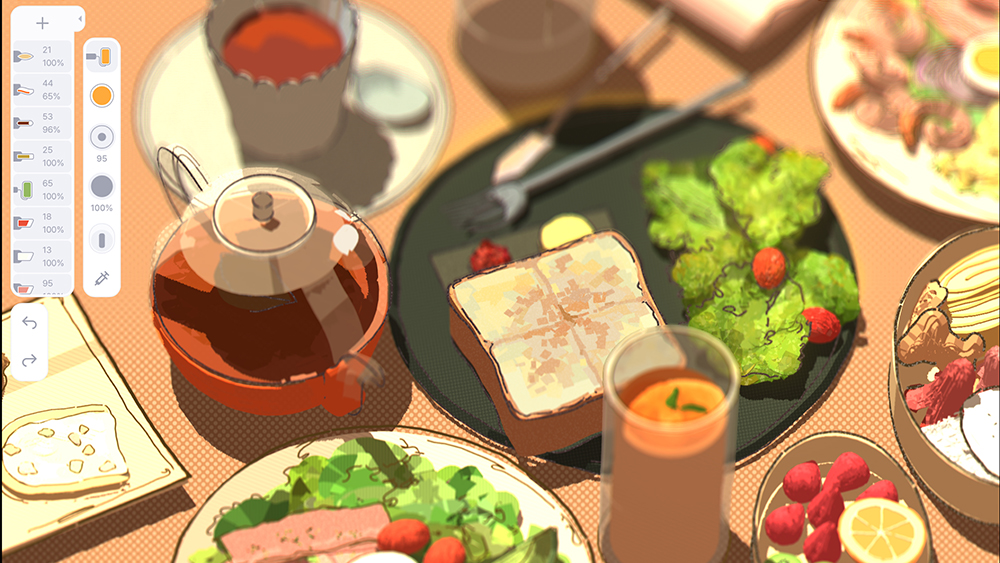How W+K's campaign for Honda was made
As Honda celebrates its 65th anniversary, Garrick Webster takes a look back at The Power of Dreams, one of the most powerful campaigns in the history of advertising.
This summer, Wieden+Kennedy London released its latest work for Honda. Hands was only meant to be a set of five-second idents to accompany Honda's sponsorship of documentaries on Channel 4. But the creative team at W+K wanted to do more, and made a two-minute piece in which a pair of hands create 22 of Honda's all-time greatest products.
At first, five-second segments from the film were used, just as intended. But when the full two-minute video was released on YouTube it went viral, clocking up almost 7.5million views overnight.
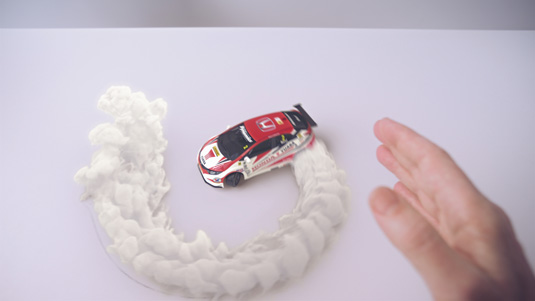
It certainly isn't the first piece of W+K work for Honda that has got people talking, and if you watch Hands carefully, you'll notice a few tiny little details that recall not just Honda's finest products, but jaw-dropping commercials from the past too.
In one scene, you might notice a little rabbit on a patch of grass. This references Grrr, one of the most awarded TV ads of all time, which introduced Honda's diesel engine. Hands begins and ends with a nut rolling onto the screen to remind us of Cog. That's the one where hundreds of car parts perform an incredible, Mouse Trap-style chain reaction. This advertised the Honda Accord.
Hands, Cog and Grrr are all part of The Power of Dreams, a campaign that has seen Wieden+Kennedy London create some of the most talked about and successful car advertising ever. Other memorable spots have included The Impossible Dream, Museum and Choir, as well as Let it Shine, which was made by W+K Amsterdam.
Behind the power of dreams
It's ironic that The Power of Dreams has become so iconic in contemporary advertising. W+K London partner Tony Davidson didn't even like the sound of that line when the agency first talked to Honda. "It is a literal translation from Japanese, so when you hear it as an English or American person, it sounds really cheesy," he says. "And I actually said, 'We're not going to work on this brand if we can't change the end line,' before we even worked for them."
Soichiro Honda, who founded the company in 1948, used his dreams and imagination to inspire his engineering work. Over the past 65 years, his dreams have been realised in the form of dozens of high-quality vehicles, all kinds of motorsport championships and a variety of prototypes for the future. "If you can make things, you can do amazing things. So that's what The Power of Dreams is: to have an idea that is beneficial to humanity and then to make it happen," explains Davidson.
If you can make things, you can do amazing things
These are some of the things that W+K distilled down into Honda's brand truths. The job of the advertising, W+K realised, was to convey these truths, and give meaning to The Power of Dreams, to consumers in the UK and later on across Europe.
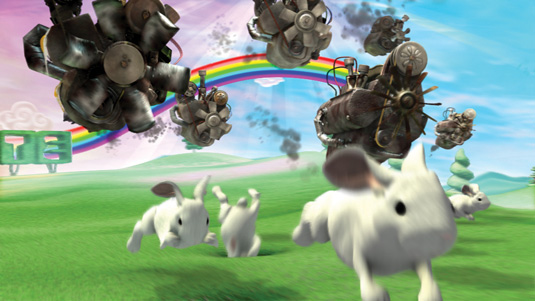
Its work began to appear in 2002. Davidson continues: "We did a press ad with a Daruma doll that explained what The Power of Dreams was. All of our ads from the start, even the very first stuff like the Honda perfume bottle with oil in it, or the banana with writing on it, or the Honda stamp for the Patent Office - they're all about having an idea and making it happen."
W+K had also started working on a television ad for Honda - introducing the new Accord. The lead creatives on the project were Ben Walker and Matt Gooden, now the creative heads at Crispin Porter + Bogusky in London. "The brief for Honda as a whole was to make engineering feel warm rather than Teutonic. 'Warm engineering' we called it," says Walker. "The brief for the Accord chopped and changed a lot, but in the end it was really about showing the car was brilliantly engineered. Nothing revolutionary, but we just had to put a 'warm' slant on that."
Chain reactions
Inspired by board games like Mouse Trap, drawings by Rube Goldberg and by a 1987 pyrotechnic art film, The Way Things Go, by Peter Fischli and David Weiss, the creatives at W+K were convinced that a chain reaction would be compelling viewing. But something was missing, until Tony Davidson came up with the idea of setting it up out of car parts.
Only if the ad itself was brilliantly executed would it be able to effectively communicate Honda's engineering prowess. French director Antoine Bardou-Jacquet at production company Partizan was hired, and in total they spent six months working on Cog – designing an enormously accurate chain reaction, and shooting it actually working, in a gallery environment. Every detail had to be finessed, including the sound. The ad is almost completely silent other than the noises made by the moving parts on screen, with a deftly added touch of music by The Sugarhill Gang towards the end.
"We spent as much time on the sound as the picture," says Tony Davidson. "Kim Papworth, my partner here at W+K London, is really anal about sound, and every sound was really crafted and recorded and then tweaked. Good advertising isn't: 'Oh my God, the idea, the idea!' That's very important, but then an idea on paper is only 30 per cent of it, and then it's how you craft stuff." A stunning production, Cog won stacks of awards. The end line was spoken by Minnesota broadcaster Garrison Keillor: "Isn't it nice when things just work?"
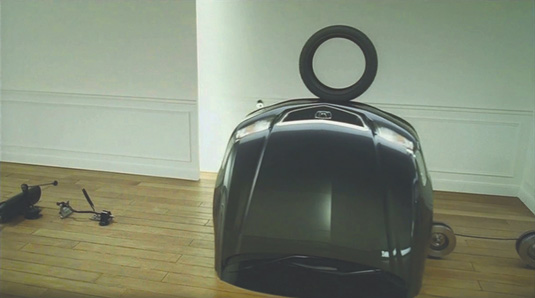
Honda Grrr
The following year, the campaign enjoyed even greater success with Grrr. The ad was to introduce not a car, but Honda's new, cleaner, diesel engine. And the kernel of the idea came directly from the engine's designer, Kenichi Nagahiro, who famously told his colleagues that he hated diesel. He refused to design a diesel engine for Honda unless he could start from scratch. The result was a cleaner, quieter, more efficient machine - the envy of the car world at the time.
The story was copywriting gold for W+K's Michael Russoff, Sean Thompson and Michael Russell who came up with the line, 'Hate something, change something'. They wrote a song that Garrison Keillor would sing based on the line, and this was handed to Alan Smith and Adam Foulkes, directors at Nexus Productions in London.
Just like Bardou-Jacquet on Cog, Smith & Foulkes worked incredibly hard on the design execution, coming up with a colourful world of positive hate, where bunnies, birds and fish take out dirty old diesel engines before Honda's newer, cleaner i-CTDi is born. It flies up over the landscape with nary a puff of exhaust.
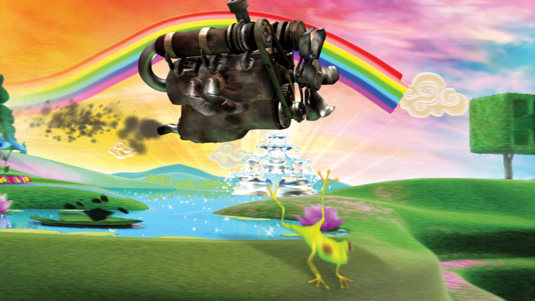
"We always say it was a mix between Chinese propaganda art, Bollywood, golf courses and Liberace and various things like that," says Smith. "There's a little dragonfly that buzzes around at one point that is absolutely beautiful. It's kind of made out of crystal. If you saw that full-screen it would look great, but I don't think you'd even notice it was a dragonfly, let alone what it looked like."
We always say it was a mix between Chinese propaganda art, Bollywood, golf courses and Liberace
Foulkes continues: "Yeah, I think for us it was all about the attention to detail, which is one of the things we like about Bollywood and golf courses. Every single leaf is considered; it's not a rough-and-ready world."
Grrr became the most-awarded television commercial of its decade, but W+K was just getting started. After turning engine parts into gripping viewing with Cog, and introducing some diesel-killing rabbits in Grrr, the next major ad went epic.
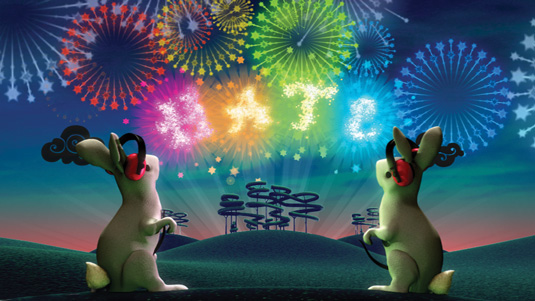
The Impossible Dream
In The Impossible Dream, released in 2005, we see a moustachioed and slightly balding main character go out and drive 13 of Honda's most iconic vehicles. He takes them down coastal roads in New Zealand, around the Motegi race track in Japan, and to Iguazu Falls on the border between Argentina and Brazil. All the while, he belts out The Impossible Dream, from Man of La Mancha, a musical about Don Quixote. The ad was directed by Ivan Zacharias from production house Stink, in London.
Once again, it was all about the execution of the ad, and detail, as Honda's history was meaningfully conveyed. Some of the classic bikes were stripped down and flown from Honda's museum in Japan to the shoot, then stripped down again and sent back. The actor that features, Simon Paisley Day, is a singer too - they didn't want someone to just lip-sync. And Zacharias brought nature into the ad wherever he could - Soichiro Honda loved the outdoors, and even designed boat engines to be marine-life friendly.
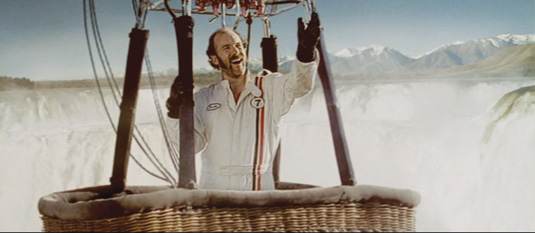
"Ivan Zacharias just pushed it that little bit further, getting into the detail," explains Tony Davidson. "It sounds stupid but if you watch the film there is an animal theme - those little birds nesting at the start, there are sheep, there are birds flying over the waterfall, there are horses in the field. That sounds really naff and shit and you say, 'I would never notice that and it doesn't matter,' but for me, going into detail like that makes it."
The day after the ad aired in the UK, a concertina leaflet was tipped-on in the Guardian newspaper explaining The Impossible Dream and how Honda had achieved it. It also included details on the vehicles included. Davidson continues: "You could find out every story, why that was one of the pivotal moments of Honda's history and The Power of Dreams, and then also find out what they were also working on in the future. So I think that was a really successful integrated piece that helped people understand."
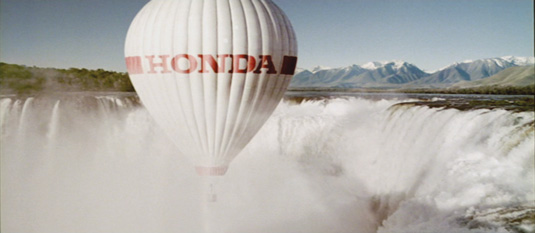
Curiosity and innovation
A variety of other ads were created - in one, a choir vocalises every sound a Honda Civic makes as it tears down the road. In another, we see Honda's robot, ASIMO, visit a museum. But Honda was beset by several problems. The high value of the yen was hampering exports. The economic crash of 2008 hit exports too and, like many firms, Honda cut and restructured its advertising spend. It pulled out of Formula One in 2008 to focus on greener pursuits. What's more, the tsunami that hit Japan in 2012 devastated many of the company's suppliers.
Yet The Power of Dreams has continued. In 2009, Let it Shine was created by W+K Amsterdam and produced by Bouffant in South Africa. A matrix of Honda headlights was used together like an LED display screen to project animations that are displayed to the spiritual song Let It Shine. It announced Honda's hybrid, the Insight, with its Honda Eco flower light. Though it could have been created digitally, doing so would have killed the spirit of the ad.
"The best decision was to actually go and shoot this on a large scale – just us and the client, drawing a line in the sand and going, 'No matter what, we're not going to fall back and settle for shooting plates and then putting the lights in during post production," explains Zach Watkins, copywriter on the project and now a creative director.
Harking back to The Impossible Dream, Hands continues the tradition with Smith & Foulkes once again directing the ad. With the engineer's hands communicating Honda's inventiveness, a total of no fewer than 22 products are shown, from leaf-blowers to robots, and superbikes to SUVs. Creative team Chris Lapham and Aaron McGurk studied Honda's creations in detail. "The key thing was everything that went in had to go through the lens of, 'Does this say curiosity? Does it have a good innovation story behind it?'" says McGurk.
Cog was my all-time favourite ad. That blew me away as a piece of creative
"Cog was my all-time favourite ad," admits Lapham. "That blew me away as a piece of creative. That was what we were trying to keep going, that tradition with Honda, because they lead the way with what they do product-wise. We're going to try and lead the way with what we're doing with the advertising, and keep it innovative and fresh."
Words: Garrick Webster
A freelance writer, editor and copywriter Garrick Webster is a former editor of Computer Arts who served for two spells on the magazine. He's perviously judged the D&AD Student and New Blood awards, and in 2011, was part of the team that produced the charity illustrations book Memories.
This article originally appeared in Computer Arts issue 220.
Liked this? Read these!
- Create a perfect mood board with these pro tips
- The world's top brands - and why they work
- The ultimate guide to logo design

Thank you for reading 5 articles this month* Join now for unlimited access
Enjoy your first month for just £1 / $1 / €1
*Read 5 free articles per month without a subscription

Join now for unlimited access
Try first month for just £1 / $1 / €1
Get the Creative Bloq Newsletter
Daily design news, reviews, how-tos and more, as picked by the editors.

The Creative Bloq team is made up of a group of art and design enthusiasts, and has changed and evolved since Creative Bloq began back in 2012. The current website team consists of eight full-time members of staff: Editor Georgia Coggan, Deputy Editor Rosie Hilder, Ecommerce Editor Beren Neale, Senior News Editor Daniel Piper, Editor, Digital Art and 3D Ian Dean, Tech Reviews Editor Erlingur Einarsson, Ecommerce Writer Beth Nicholls and Staff Writer Natalie Fear, as well as a roster of freelancers from around the world. The ImagineFX magazine team also pitch in, ensuring that content from leading digital art publication ImagineFX is represented on Creative Bloq.
